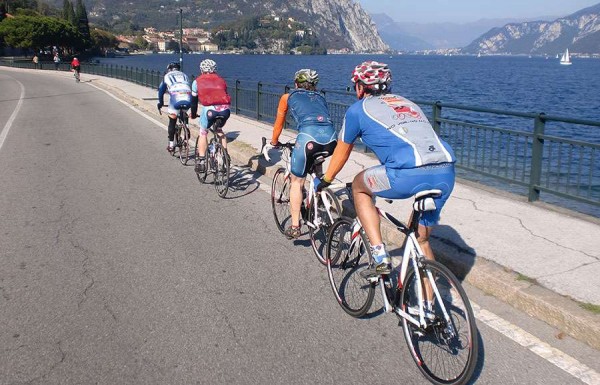Vastly different roads, long expanses of countryside, differences in culture, a plethora of unique foods, and the potential for fewer vehicles on the roads are just some of the reasons that make cycling abroad such an appealing activity. Whether you’re training for a century ride, or just engaging in your hobby with a few friends, it’s important to get to know a little bit more about your destination and the ins and outs of cycling abroad before taking to the road.
Cycling Abroad – Why Do It?
As fun as it is to traverse your local area on two wheels, it can be quite the exhilarating feel to explore an unknown location or journey down roads that go on for miles without knowing what’s around the next bend. One such location in the world is around the Mediterranean Sea which has an abundance of roads that run across the countryside, hills, and mountains not to mention snake their way through quaint old towns that have incredible food, coffee, wine, beer, and locals to accentuate your ride.
When compared to other locations around the world, the Mediterranean has far less cars on the road, meaning that cyclists can often go on for miles without bumping into a single vehicle. Even the smallest islands play host to some of the most extensive roads such as Mallorca or Sicily and this allows cyclists to travel from location to location unhindered.
Pushing the Limits
Most competitive cyclists are keen to enhance their endurance levels and what better way than by literally having to cycle across entire expanses of land? Your cardiovascular health will come in to play and if your body isn’t ready for a long ride, then it definitely won’t be prepared for consecutive days of long riding. That’s a major reason why cycling abroad has become such a popular pastime for cyclists everywhere as when doing a trip abroad you just want to see more, ride more, and experience more.
Dealing with the Change in Climate
If there’s one thing that’s guaranteed to cause a shock to the system, it’s the change in climate when you’re abroad. Whether you’re visiting Europe, Australia, Africa or Asia, the temperatures in the summer can reach incredible heights. If you’re traveling to the Northern Hemisphere, then a great time to cycle is between September and December, where the temperatures are cool enough to train in.
If you’re planning a trip to the Southern Hemisphere, then January to March is a better time to cycling abroad. Just be sure to take plenty of water and make frequent stops to recover unless you’re able to push further. Wherever you’re planning to ride, it’s a good idea to prepare a kit just in case you find yourself in need of assistance. The sparsely populated regions are often miles away from amenities!
- Plenty of fresh water is vital. Drinking water isn’t always available, so stock up.
- Repair kits are a must and although it’s unlikely that your tires will blow-out, they may still suffer punctures.
- A working cell-phone can go a long way, so check your coverage in the country you’re in before setting out.
Training Routes
Most countries will feature routes for cyclists that may be marked with signs or shown in a local map. Popping in to the local authority to grab a few maps will go a long way and it’s always a good idea to stick to the routes as opposed to going off-road. If you’re training for a competition that involves off-road cycling however, then be extra safe since you’re in an unknown land potentially without the immediate access to help if needed.
If there’s one complaint to be had about cycling routes, particularly in remote areas, it’s that they can sometimes fall in to disrepair. Certain markings or signs can become hard to read especially if they are in another language, or they may have worn away entirely. If you’re ever unsure, you may have to seek advice or simply navigate with the logical due care and attention!
Making the Most of your Cycling Abroad
When cycling abroad, you want to make the most of your time there. To do so, you should make sure you’re in shape enough to enjoy the riding that you’re doing. If you’re planning on going someplace mountainous, make sure your weight is in check and that you incorporate some good training and mountain riding to prepare for it. There’s nothing worse than getting someplace and realizing that you don’t quite have the fitness to enjoy the riding and that you can’t do all that you want. In the weeks and months leading up to your trip cycling abroad, make sure you’re riding enough and at the proper intensities to be ready.
Tips on Traveling Abroad to Ride
- Bring any tools and spare parts you may need on your trip as finding what you need to fix something in a foreign country can be a hassle.
- Buying travel insurance before you go is not a bad idea as most will cover baggage damage or loss, flight interruptions, along with the hospital bills should you have an accident, along with other unforeseen circumstances.
- Hit up a local if you can on where the good rides are along with good places to eat and check out. Inside knowledge will go a long way.
- Be kind, courtesy, and respectful whether in traffic or at the local restaurant. You are the foreigner and most likely don’t know the local customs and standards. It will go a long way in your experience as people will be much more receptive to reaching out and elevating your travel experience.
